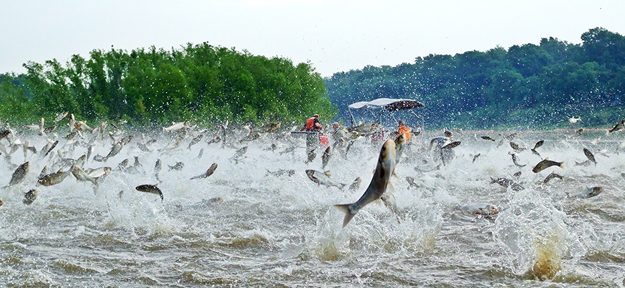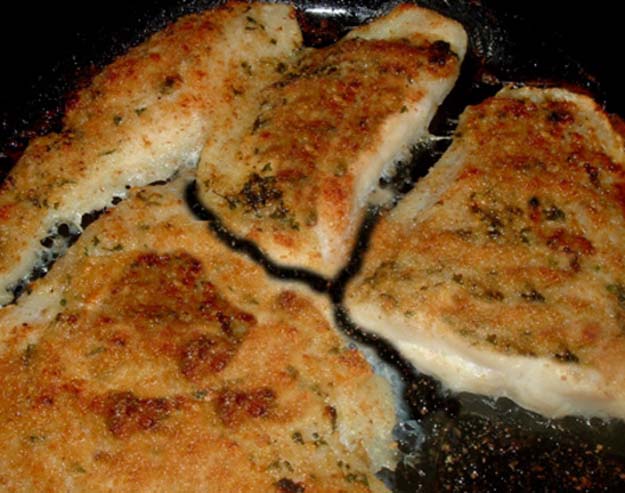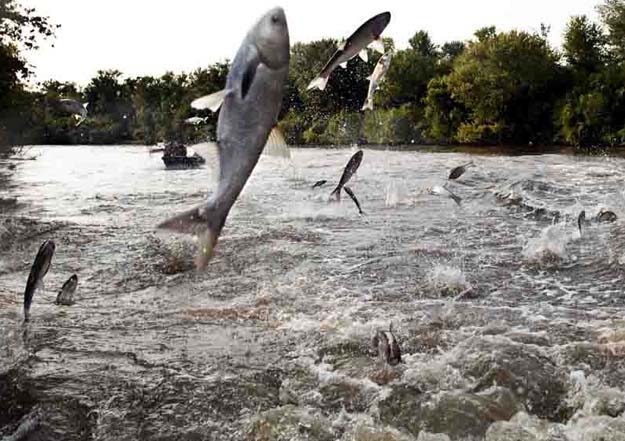
ILLINOIS DNR removes an unbelievable number of carp from the Illinois River. Photo courtesy of IDNR.
Over 70,000 pounds of Asian carp removed from Illinois River
by KHQA / Quincy, Illinois / June 13, 2017
[dropcap]O[/dropcap]ver the past three weeks, contracted commercial fishermen have caught and removed over 70,000-pounds of Asian carp from parts of the Illinois River.
These fishermen are contracted through the Illinois Department of Natural Resources. They used a series of hoop nets in the Starved Rock and Marseilles Pools of the Illinois River in response to a possible black carp upstream range expansion.
While no black carp were caught, timing and potential spawning conditions led to an impressive catch and removal of 70,239-pounds. of Asian carp.
What exactly are they?
The name “Asian carp” is an umbrella title for four different species: bighead carp, black carp, grass carp and silver carp.
Invasive carp have been progressing upstream since escaping into the Mississippi River in the 1970s. They were imported to remove algae from catfish farms and wastewater treatment ponds. But sometime in the next two decades, the fish escaped their enclosures — most likely due to several large floods in the ‘90s — and began to spread.

Illinois River Biological Station – Detroit Free Press, Nerissa Michaels (AP Photo).
What do they eat?
Silver and bighead carp are filter-feeding fish and consume plant and animal plankton. Asian carp can grow to large sizes: some as large as 110-pounds, though the average size is around 30-40 pounds. Bighead and silver carp are voracious eaters, capable of eating up to 20% of their body weight each day.
Do Asian carp have teeth?
As an adult, this brute can grow up to 4 feet in length and weigh over 100 pounds. A Side Note: Asian carp do not have traditional teeth on their jaws. They have what are called pharyngeal teeth – or “throat” teeth.
Why is the Asian carp a problem?
Bighead and silver carp are voracious eaters. This is a problem because the diet of Asian carp overlaps with the diet of native fishes in the Mississippi and Illinois Rivers. Asian carp consume plankton—algae and other microscopic organisms—stripping the aquatic food web of the key source of food for native fish.
Are they good to eat?

Delicious baked Asian carp. The carp are vegan’s, the meat is white, tasty and tender.
Yes, delicious. The best part about it is that you’re eating green, you’re doing something to ensure the sustainability of other native foods by consuming this critter.
Eating carp may be a new thing for Americans, but the fish have been a staple in Asia for generations.
Can you fly fish for them?
Yes, think worms / wooly worms 1- to 3-inches long. Fish dams, obstructions, turbulence and fast current for best results.
IGFA recognizes carp, silver (Hypophthalmichthys spp.). All-Tackle – 70 lb 8 oz.
IGFA recognizes carp, silver carp, common (Cyprinus carpio). Tippet 16 lb / 42 lb 0 oz / Annone Lake, Italy
The carp’s original range was limited to temperate Asia and the rivers of the Black Sea and Aegean basins, notably the Danube, in Europe. Today, they are widely distributed in North America below the 50th parallel south to the Florida panhandle. Besides North America, Europe, and Asia, it is also now found in South America, Africa, Australia and New Zealand. This is one of the largest members of the “minnow” family, Cyprinidae, and a close relative of the goldfish (Carassius auratus). Source, IGFA.
NOTE Featured Image ILLINOIS DNR.







